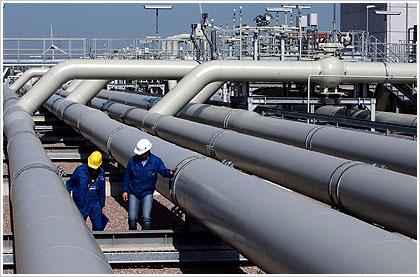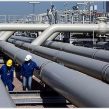
Socialism Struggles to Survive in Croatia’s Gas Sector
Publication: Eurasia Daily Monitor Volume: 7 Issue: 181
By:

Croatia expects to join the European Union as a full member by 2012 or 2013, but has yet to adapt its energy market to EU norms, particularly in the gas sector. That sector continues to be handicapped in Croatia by elements from a socialist legacy.
Some Croatian interest groups and parts of the public tend to regard natural gas as a social commodity, rather than a market commodity. Many expect the government to keep prices low through regulation and other forms of state intervention. Indeed, regulated gas prices paid by household and big industrial consumers in Croatia are 20 percent to 30 percent below European market-based average prices (Novi List, September 22).
The country consumes some 3 billion cubic meters (bcm) of gas per year, 60 percent of it from internal production while 40 percent is imported from Russia . The real aggregate cost of Russian gas is inordinately high in Croatia , due to exorbitant transportation costs. Croatia buys Russian gas at the Ukrainian-Slovak border and must transport the fuel by a long, circuitous route via Slovakia , Austria , and Slovenia to Croatia . Nevertheless, due to state regulation, Croatian consumers pay considerably lower prices for that gas, compared with consumers in Austria , Hungary , or Slovenia .
The Croatian oil and gas company INA must sell gas in Croatia at prices lower than the purchase price of the imported gas. Thus, INA subsidizes gas consumption in Croatia . The Hungarian privately-owned MOL and the Croatian government are the largest and second-largest stakeholders, respectively, in INA.
The government seeks to postpone for as long as possible the adjustment of prices to market levels. Instead, it favors both household consumers and large-scale industrial users with unrealistically low prices. Croatia’s leading industrial users are the national electricity-generating company HEP and the chemical companies Petrokemija and Dioki. Artificially low gas prices enable HEP to keep the cost of electricity unrealistically low; and the export-oriented fertilizer producer Petrokemija, to stay competitive thanks to cheap gas, albeit at the expense of state and society.
On a lower scale, Croatia’s gas sector resembles in some respects the Ukrainian gas sector with regard to price regulation and subsidized consumption. In Croatia as in Ukraine, state intervention aims to keep gas prices artificially low; the costs or purchasing Russian gas are higher than the sale prices for that gas in the country; cheap gas is seen by many as a social entitlement as well as a favor to selected industrial enterprises. Gas marketing was turned artificially into a loss-making proposition, failing to generate necessary re-investment in the development of infrastructure, or in gas exploration and production. For example, INA could invest in further exploration and production in Adriatic gas fields, if relieved of the annual losses that are forced on it in the state-regulated gas business.
Under its agreement with MOL, the Croatian government was obligated to take over INA’s domestic gas-trading arm, Prirodni Plin, by December 2009. The government demanded and obtained a one-year postponement; but it does not seem willing at this point to meet that obligation by December 2010. Due to government-regulated gas prices, the gas-trading business inflicts losses of almost $ 100 million on INA, in effect forcing it to subsidize gas consumption (Poslovni Dnevnik, Croatian TV Channel One, October 6).
Initially, the Croatian government itself had wanted to take over Prirodni Plin in order to control the gas business and regulate prices below market levels. Apparently, however, it seeks to postpone such overdue reforms, preferring instead to saddle others with the costs of delaying reform.
Meanwhile, the prerequisites to market liberalization are emerging in Croatia thanks to the EU’s proximity. Hungarian MOL’s gas transmission subsidiary and Croatia’s transmission operator Plinacro are now completing an interconnecting pipeline between the two countries. With a capacity of 6.5 bcm per year (twice Croatia’s current consumption), this line can open access to the Croatian market from a range of possible suppliers. This could include Russian gas sold at the Ukrainian-Hungarian border and transported directly to Croatia, instead of the Slovakia-Austria-Slovenia-Croatia route. The German E.ON Ruhrgas has also initiated discussions with the Croatian government, ahead of the opening of that pipeline (Vjesnik, September 20; Novi List, September 23).
Market liberalization and competition can not, however, be expected to perpetuate low-priced gas in Croatia. On the contrary, it can only lead to aligning gas prices in Croatia with European market-based prices. But the reforms and realistic prices will enhance security of supply, interconnections, development of storage capacity, as well as capital investment to modernize infrastructure and rationalize distribution.
Croatia has not yet adjusted to EU market regulations. It needs to do so ahead of the proposed accession date in 2012, shedding the remnants from the socialist-era acquis and adopting the EU acquis also in the gas sector.




